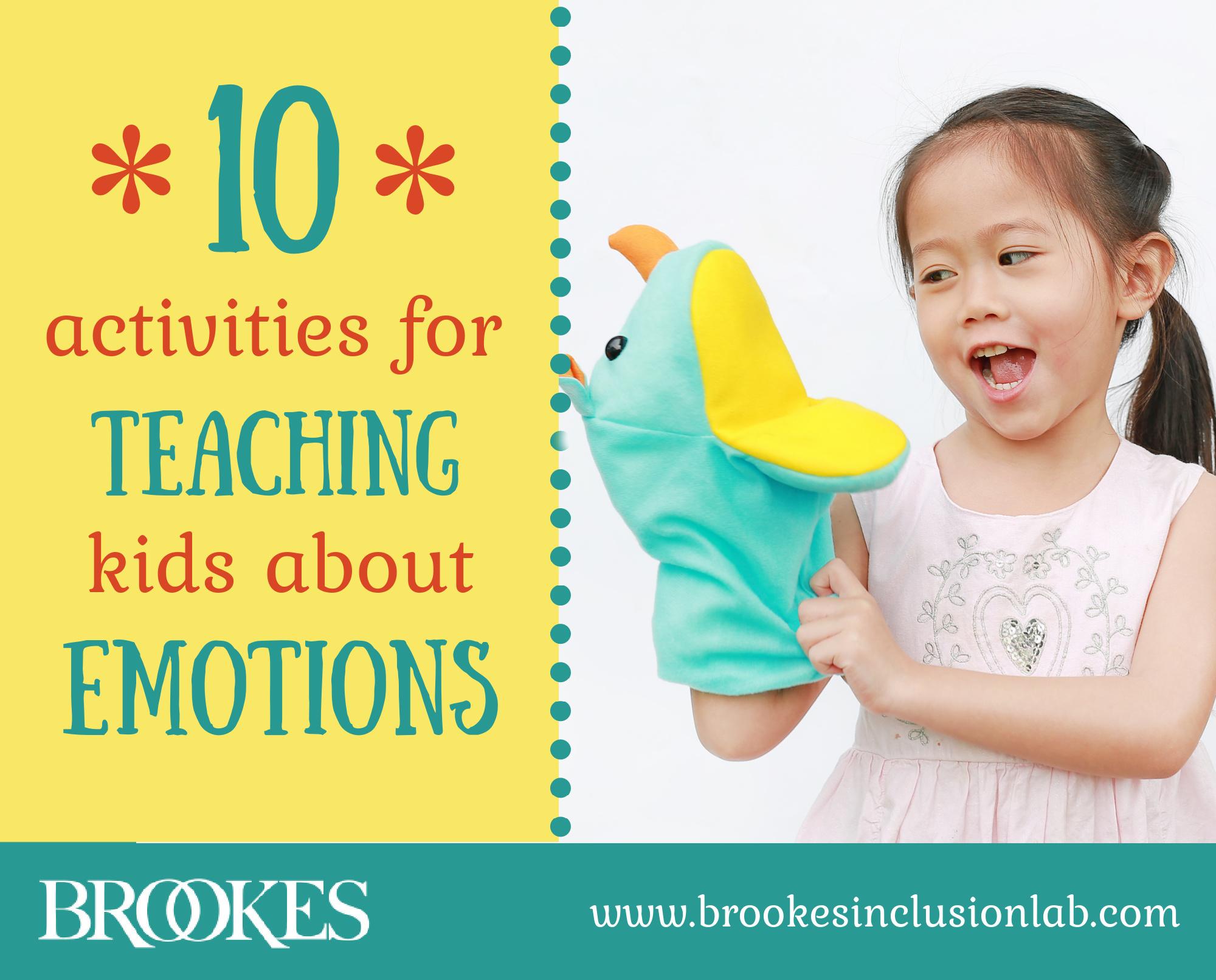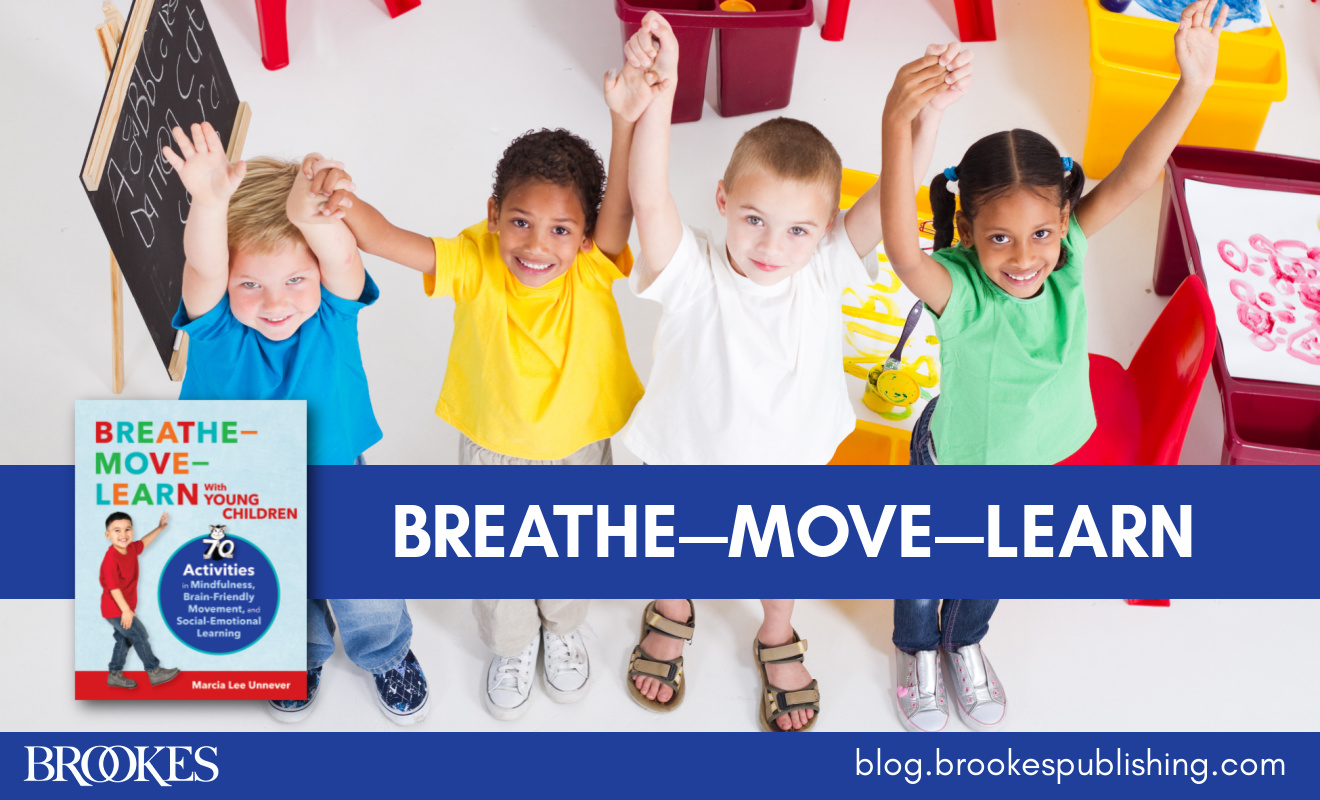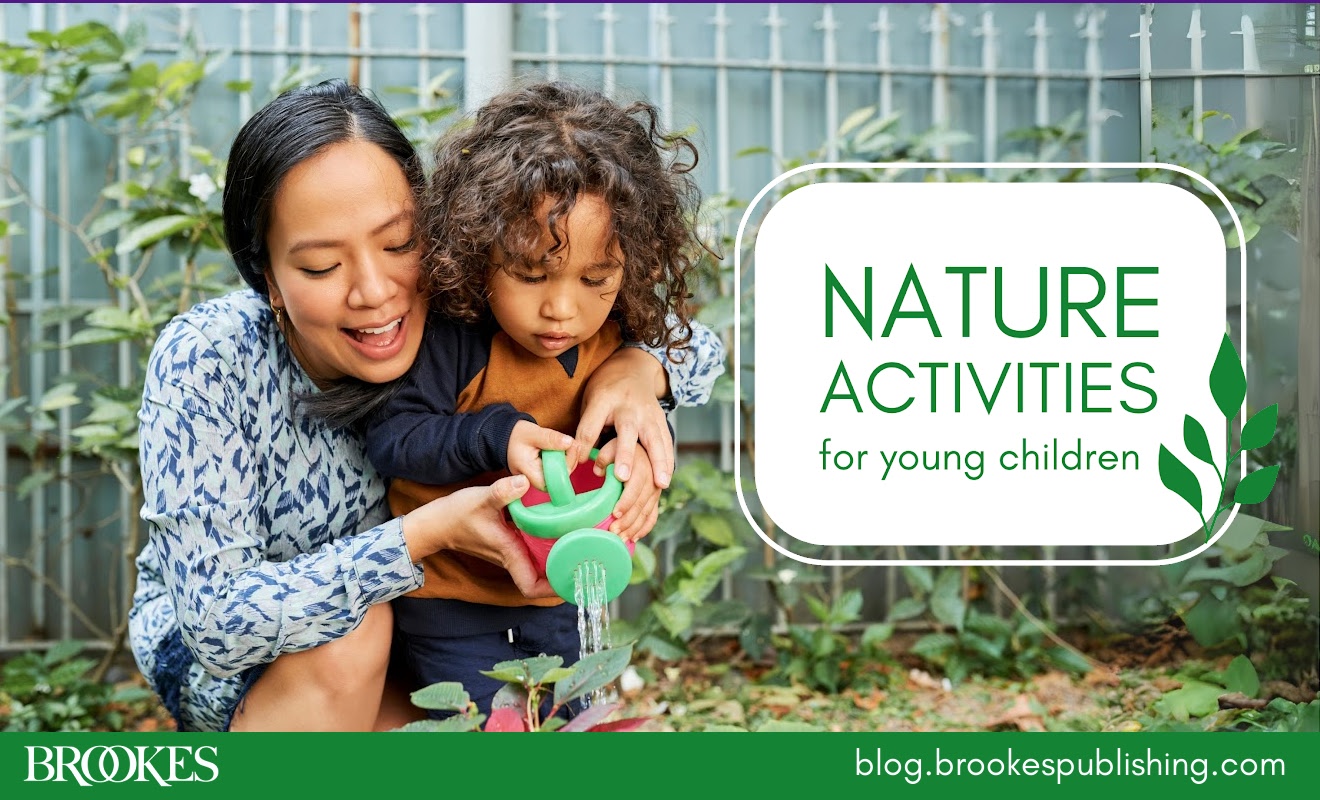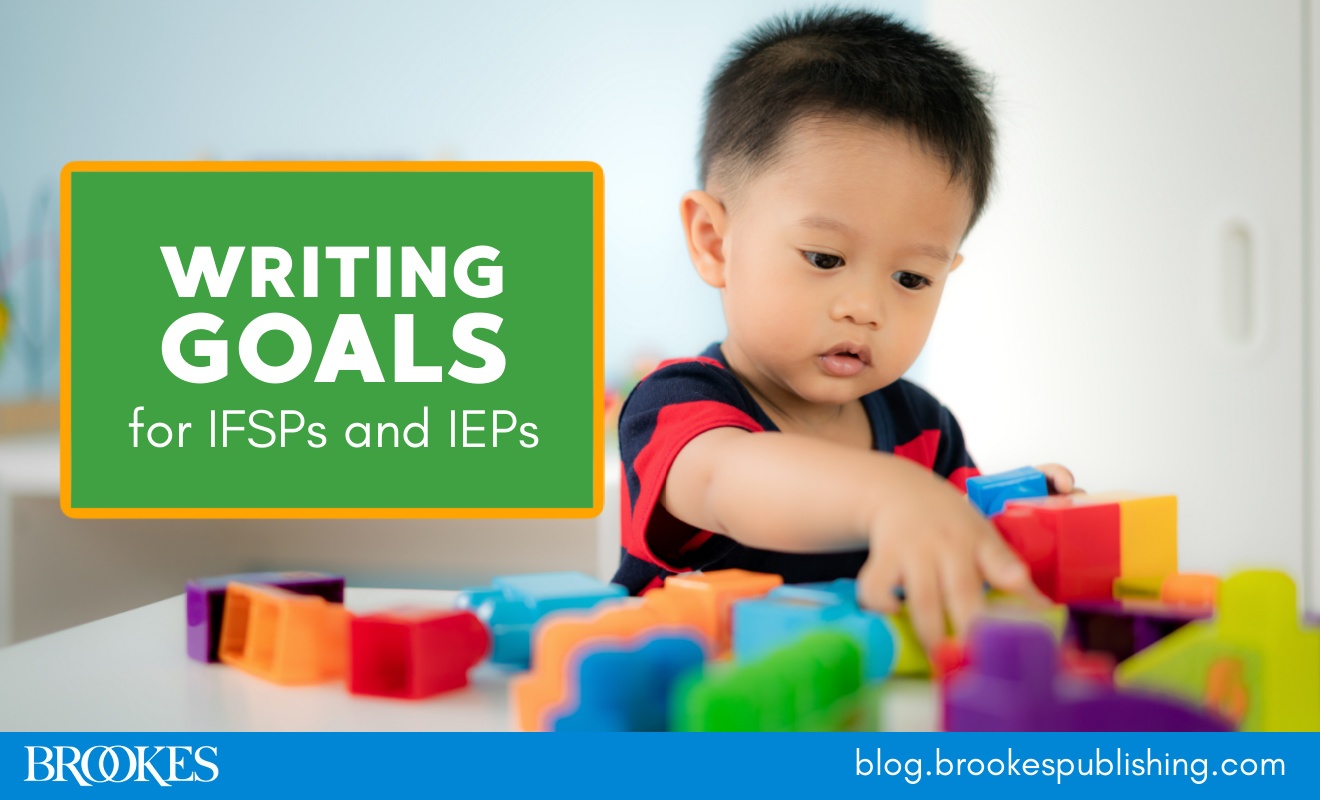10 Activities for Teaching Young Children About Emotions
January 26, 2021
Having the vocabulary to talk about emotions is an important part of healthy social-emotional development. In today’s post, we’re sharing a few simple games and activities you can use to teach young children about emotions: how to recognize and name them, how to talk about them, and how to pick up on the feelings of others. Adapted from some new and classic Brookes resources on social-emotional development, these activities are ideal for use in early childhood programs (and parents can easily adapt them for home, too!).
What’s your favorite way to get young children talking about emotions? Add your idea in the comments below!
Feelings ID
This activity is a great starting point for teaching young children about emotions. Here’s what to do:
- Generate a list of feelings. Start with a basic feeling, such as happy or sad, and explain that this is a feeling. Give a second example, using a more complex feeling such as excited or surprised. Ask students to generate other feelings, add them to the list, and display the list for students on chart paper or with a projector.
- Identify feelings as good or not so good. Go back to the start of your feelings list, and have the students give you a thumbs-up for feelings that make people feel good on the inside and a thumbs-down for feelings that make people feel not so good on the inside.
- Conduct a follow-up discussion. Ask students if they have ever had any feelings where it was hard to decide if the feeling made them feel good or not so good on the inside. Give an example.
Feeling Dice Game
Create “feeling dice” using clear acrylic photo cubes—slide drawings of faces depicting different emotions on each side. (You could also use photos or cutouts from magazines instead of drawings.) In a small group, give each child a chance to roll the dice. When the dice lands, ask the child to identify the feeling and describe a time when they felt that way.
How Would You Feel If…
Brainstorm some common scenarios that might elicit different feelings. A few examples:
- “Your grandma picked you up after school and took you get to ice cream.”
- “Your classmate spilled paint on your drawing.”
- “Your mom yelled at you.”
- “Your brother wouldn’t let you have a turn on the swings.”
Put the scenarios in a hat and pass the hat around the circle or small group while you play music. When you stop the music, the child left holding the hat should pick out a scenario (you can help read it for the child if they can’t yet read). Then ask the child to describe how they would feel if the scenario happened to them.
Read & Learn
Choose a book about feelings to share with students, or read a book from the following list of examples: Feelings by Aliki, The Way I Feel by Janan Cain, Feelings by Joanne Brisson Murphy, The Feelings Book by Todd Parr, and My Many Colored Days by Dr. Seuss. Be sure to point out all the actions or ways in which the characters behave when they’re acting on their feelings. Use the following questions to guide your class discussion about emotions:
- What was one of the feelings the character had?
- Do you think it was a good or not so good feeling?
- What did the character do when he or she was feeling that way?
- Was it an okay or not okay way of showing the feeling?
- Can you think of a time when you felt that way? What kind of face can you make to show that feeling?
Feeling Wheel Game
Create a spinning wheel that features different feeling faces. (Need tips on making one? This blog post shows you how to make spinners for games using items you probably have easy access to.) Give each child a chance to spin the feeling wheel. When the spinner lands on a feeling face, ask the child to identify the feeling and talk about an incident that made them feel that emotion.
Emotion Charades
Form small groups of students. Using laminated cards with illustrations of feelings on them, a large die, or a beach ball with each stripe of color preassigned to represent a feeling, have students act out the face and body clues that show the feeling they drew or rolled. Ask the other students to take turns guessing which feeling is being acted out.
Feeling Face Bingo
Create feeling face bingo boards for your students, each with 12 squares that feature various feeling faces (you can add more squares for older children). Have children draw a feeling name from a bag and then cover the matching feeling face with the paper that was drawn from the bag. When they cover a face, they can talk about events or memories that made them feel that emotion.
Puppet Play
Puppet play is a good activity to try one-on-one or in small groups to help children explore and express their feelings, ideas, and concerns. Many children find it easier to talk about feelings during puppet play, because it can give them some distance from scary or upsetting issues.
Encourage children to pick up a puppet and be its voice while you or another child or adult adopts the character of another puppet. You can discuss the children’s feelings indirectly and offer another point of view through your puppet. Reversing the characters so that children play another role can also promote empathy by helping kids experience how others feel.
Feelings Collage
For this activity, you’ll need old magazines and some basic art supplies: posterboard or construction paper, scissors, and glue sticks. Invite your students to cut pictures from the magazines of people expressing any kind of feeling, and instruct them to use these images to build a “feelings collage.” Hand out markers and ask students to label each picture in their collage with a feeling word; then, have them take turns explaining their collages and feeling labels to the group. Encourage your students to elaborate on the details of what they noted regarding the person’s facial expression, their body language, or the context of the photo or illustration. When the activity is over, let your students take the collages home and post them in a prominent place so they can practice identifying and labeling their own feelings.
Feeling Face Memory Game
Make 12 pairs of matching feeling faces—you can draw them or find appropriate photos or illustrations to print out. Turn over the face cards and arrange them in a grid. Ask each child to turn two cards over to try to get a match. When they find a match, they can say what the feeling is and describe a time when they felt that way. They set the match aside, and children keep going until all matches are found.
***
Try these games and activities with your students (or at home with your own children), and let us know which ones worked best for you! And for more ways to help promote healthy social-emotional development in young children, check out the books we adapted this week’s post from:
Activity 1: Adapted from Merrell’s Strong Start—Grades K–2, by Sara A. Whitcomb, Ph.D., & Danielle M. Parisi Damico, Ph.D.
Activities 2, 3, 5, 7, and 10: Adapted from Unpacking the Pyramid Model, edited by Mary Louise Hemmeter, Ph.D., Michaelene M. Ostrosky, Ph.D., & Lise Fox, Ph.D.
Activity 8: Adapted from Pathways to Competence, Second Edition, by Sarah Landy, Ph.D.
Activities 4, 6, and 9: Adapted from Merrell’s Strong Start—Pre-K, by Sara A. Whitcomb, Ph.D., & Danielle M. Parisi Damico, Ph.D.




Write a Comment
Your email address will not be published. Required fields are marked *
comments
myrna estrada says
I really enjoy this Ideas. I will make good use of them.
How about some Ideas on classification and Family routines . thank you
Post a Comment